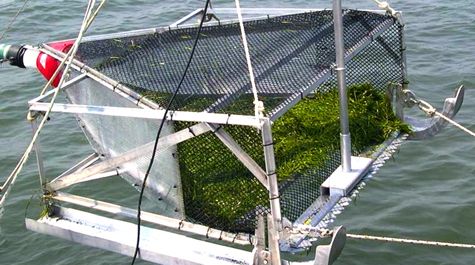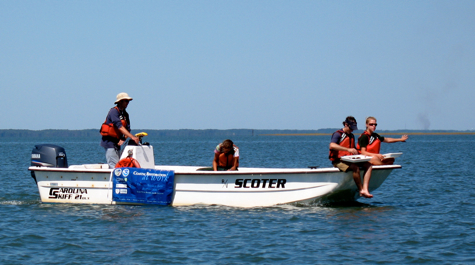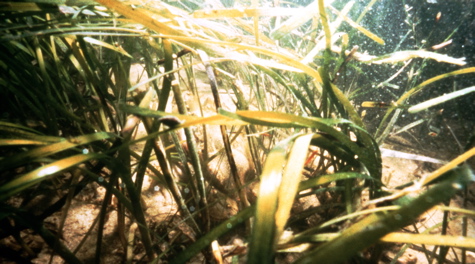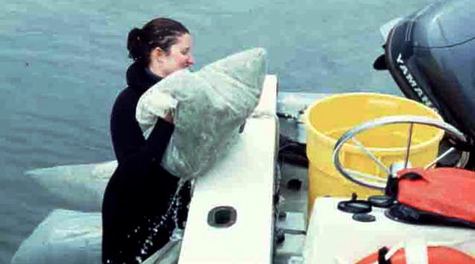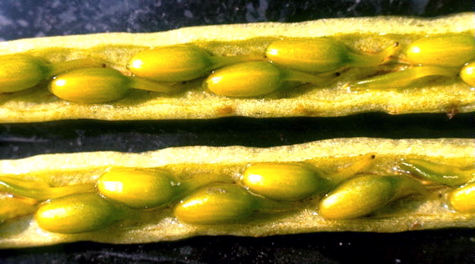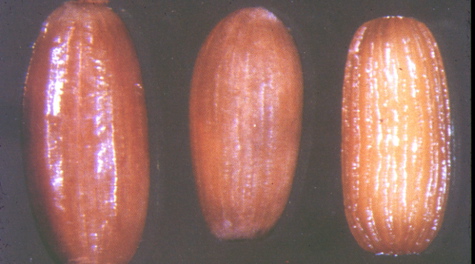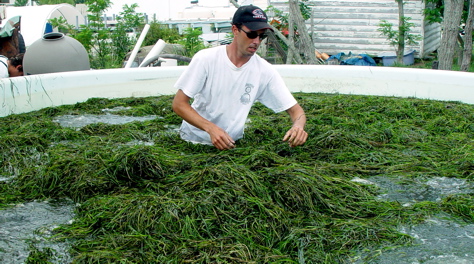VIMS contributes to international seagrass restoration project
Project team aims to develop innovative harvesting and planting techniques
Denmark has made noteworthy strides in reducing nutrient pollution, a problem that has decimated seagrass beds in its own coastal waters, in Chesapeake Bay and other large estuaries, and in other near-shore ecosystems worldwide.
Now, a $4.49 million grant to an international team that includes researchers Robert “JJ” Orth, Ken Moore, and Scott Marion of the Virginia Institute of Marine Science will support efforts to develop innovative techniques and tools for restoring eelgrass to areas where nutrient reductions have brought back the clear, sunlit waters this underwater plant needs to thrive.
The 5-year "NOVAGRASS" project, funded by the Danish Council for Strategic Research, will be led by Dr. Erik Kristensen of the University of Southern Denmark, in partnership with VIMS, other research centers in Denmark, Sweden, and the Netherlands; government agencies; and private businesses.
Orth—who leads an eelgrass restoration project in Virginia’s coastal lagoons that ranks as one of the most successful in the world—says that members of the NOVAGRASS team will “use small-scale tests to determine the best techniques for harvesting, storing, and planting eelgrass seeds, then work with industry partners to develop the equipment and logistics needed to scale these techniques up for use in large-scale restoration efforts."
"This parallels many of the successful techniques we’ve developed here in Virginia,” says Orth.
Seagrass restoration efforts
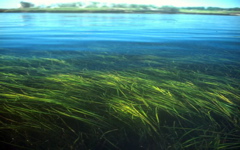 Seagrass restoration efforts are planned or in operation in coastal zones around the world, as citizens and governments begin to recognize the many economic and ecological services that seagrasses provide. Seagrass meadows offer nursery habitat and feeding grounds for fish and shellfish, protect shorelines from erosion, and help improve water quality by absorbing excess nutrients and trapping suspended particles.
Seagrass restoration efforts are planned or in operation in coastal zones around the world, as citizens and governments begin to recognize the many economic and ecological services that seagrasses provide. Seagrass meadows offer nursery habitat and feeding grounds for fish and shellfish, protect shorelines from erosion, and help improve water quality by absorbing excess nutrients and trapping suspended particles.
Kristensen says the impetus for the NOVAGRASS project comes from the findings of prior studies by his own team, Orth’s Seagrass Monitoring and Restoration Program and Moore’s shallow-water monitoring work at VIMS, and other seagrass research groups around the world.
“Our previous REELGRASS study revealed that the expected recovery of eelgrass following reductions in nutrient loading hasn’t occurred,” says Kristensen, “even in areas where government regulations and voluntary actions during the last few decades have significantly reduced the runoff of nitrogen and phosphorous into Danish waters.” An integrated effort in the watershed that feeds Denmark’s Odense Fjord has reduced nitrogen inputs by up to 25%, and inputs of phosphorous by about 75%. Nutrient reductions limit the algal blooms that can otherwise block the sunlight that seagrasses need for photosynthesis.
Negative feedbacks
Moore and Orth say that natural recovery in areas where human activities have reduced eelgrass cover is limited by negative feedback mechanisms that hinder or delay the transition from seeds to established seedlings. Moore compares the situation to the difficulties a homeowner might encounter when trying to re-establish grass by seeding a bare patch of dirt, as opposed to re-seeding thin spots within an existing expanse of healthy lawn.
Kristensen says the negative-feedback mechanisms include wave action and the effects of drifting seaweed. “Both of these can destroy eelgrass seedlings,” he says, “either directly by ballistic impact and shading or indirectly by stirring up sediments that then limit the amount of light reaching the seafloor.”
Kristensen notes that eelgrass recovery can also be hampered by a marine worm called Arenicola marina, which commonly invades former eelgrass meadows, where it’s burrowing and feeding can bury seeds too deep for germination, and dislodge any seedlings that have begun to emerge.
Another factor, he says, is the organic enrichment of seafloor sediments that often accompanies the over-fertilization that first contributes to seagrass decline. This enrichment reduces the sediments’ anchoring capacity, making eelgrass seedlings more likely to be displaced by currents.
Kristensen and Orth have high hopes for the NOVAGRASS project, noting that it builds on lessons learned during earlier research and restoration work, including Orth’s ongoing efforts in Virginia’s coastal lagoons.
Orth and his staff will host a number of the Danish colleagues in 2013, when they travel to Virginia to observe many of the successful techniques employed by Orth, Marion, and Moore in their restoration work in the region.
“The successes seen in the U.S. and Holland reveal the need for careful consideration of site selection, water quality, and the scale of restoration,” says Kristensen. “These projects also show that restoration techniques must be developed specifically for the environmental conditions in each marine location where eelgrass restoration is attempted.”
“Recognizing the importance of seeds in developing new beds as well as stressors and bottlenecks that deter seedling growth is a big help for developing the techniques and tools needed for future large-scale restoration efforts,” says Orth.
Orth and Moore just returned from a meeting in Denmark where they shared the results of their research with university and governmental officials.

